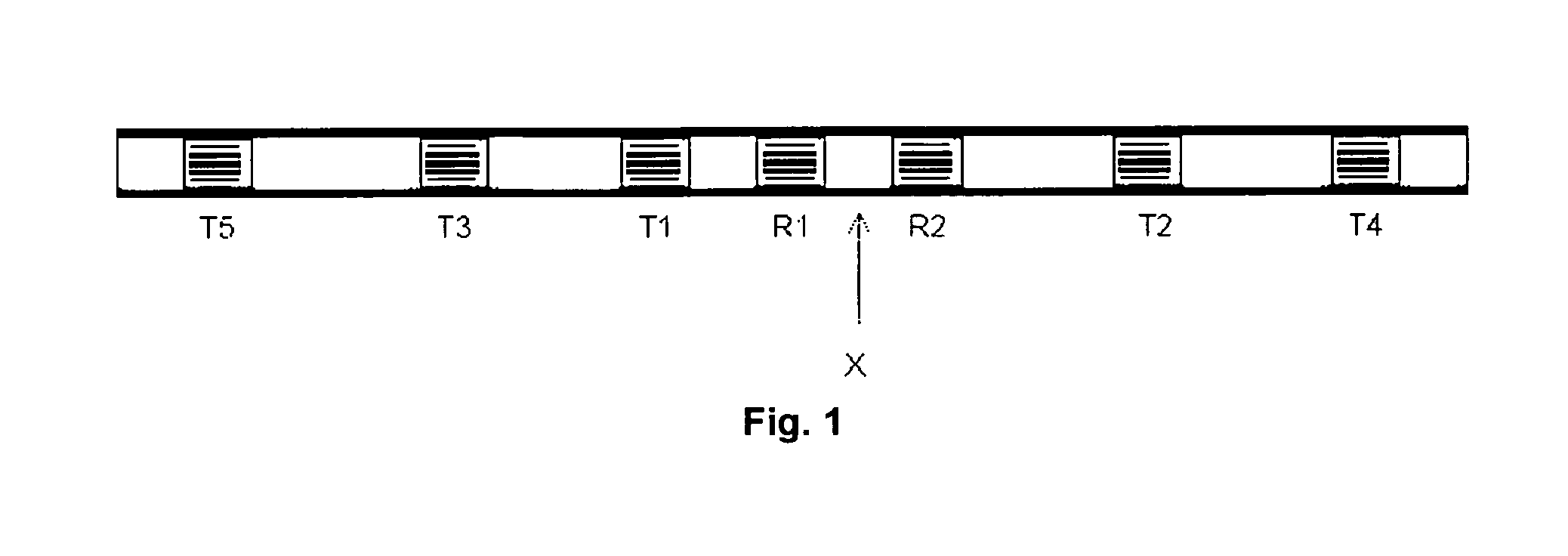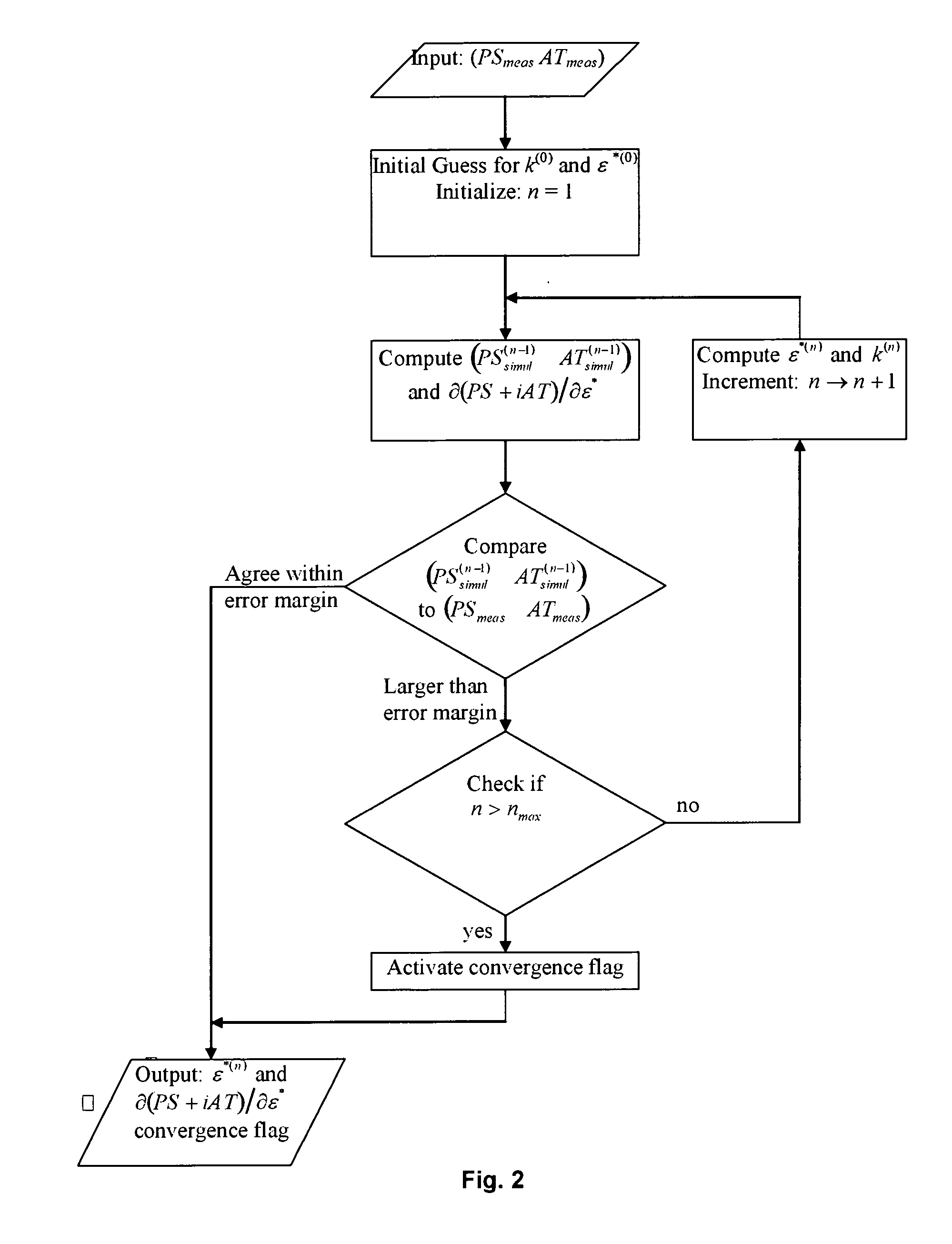Determination of complex dielectric constants from electromagnetic propagation measurements
a dielectric constant and complex technology, applied in the field of interpretation of electromagnetic measurements, can solve the problem of time-consuming computation steps in iteration
- Summary
- Abstract
- Description
- Claims
- Application Information
AI Technical Summary
Problems solved by technology
Method used
Image
Examples
Embodiment Construction
[0021]Any electromagnetic-propagation measurement emits a signal from a transmitter and detects it at a receiver. The received signal differs in amplitude and phase from the emitted signal. In general it is written as complex-valued receiver voltage U* with its amplitude A and phase φ:
U*=Aeiφ=U0eα+iφ
[0022]Here a voltage U0 of arbitrary normalization describes the transmitter signal, so that the transmitter amplitude and an exponential replace the receiver amplitude
A=U0eα.
[0023]Commonly, the received signal is given as the logarithm of this voltage, where the transmitter amplitude is discarded; the phase is converted to degrees and the amplitude to decibel (dB):
-ln(U*)=-ln(U0)+φ-a->180∘πφ-20ln(10)a
[0024]The factors 180° / π and 20 / ln(10) convert radian to degree and natural logarithm to decibel, respectively. They are merely engineering conventions without any scientific significance and are not used further here.
[0025]For an electromagnetic propagation tool with a differential receive...
PUM
 Login to View More
Login to View More Abstract
Description
Claims
Application Information
 Login to View More
Login to View More - R&D
- Intellectual Property
- Life Sciences
- Materials
- Tech Scout
- Unparalleled Data Quality
- Higher Quality Content
- 60% Fewer Hallucinations
Browse by: Latest US Patents, China's latest patents, Technical Efficacy Thesaurus, Application Domain, Technology Topic, Popular Technical Reports.
© 2025 PatSnap. All rights reserved.Legal|Privacy policy|Modern Slavery Act Transparency Statement|Sitemap|About US| Contact US: help@patsnap.com



